Guest Blog: The CDT, by Triple Crown Hiker 'Flamingo'
Life, Love, Cows, and Mental Health: A niche guide to the Continental Divide
My name is Phill Toomasian, but as I am a long distance hiker or “thru-hiker” I often go by the trail name “Flamingo” when out in the field (or really the mountains). In highschool I commandeered a pair of bright pink pants out of my church’s costume box. They were so goofy and simply had to be mine even if I did not have a plan for them.
In college I led backpacking trips for youth and I would occasionally pull these pants out to get a laugh. The responses were often lackluster, but I discovered that these pants were the best pair of hiking pants in existence. They cooled my legs down as I walked, the bugs never bit me, and the wind no longer bothered me. I would never hike in anything else. I knew that I'd be given a trail name for my pants, so I just waited until I heard one I liked. It took three days on the Pacific Crest Trail for me to take on “Flamingo.”
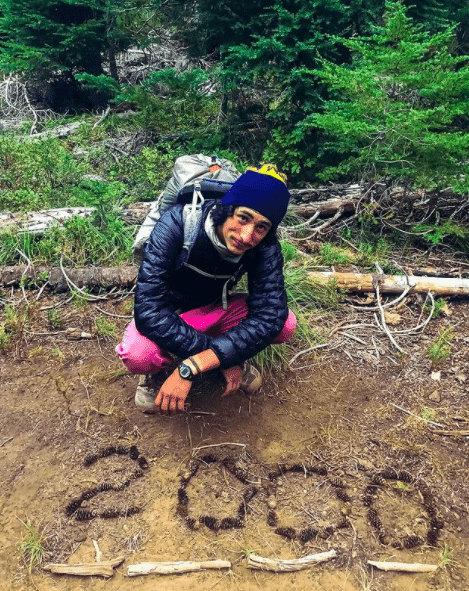
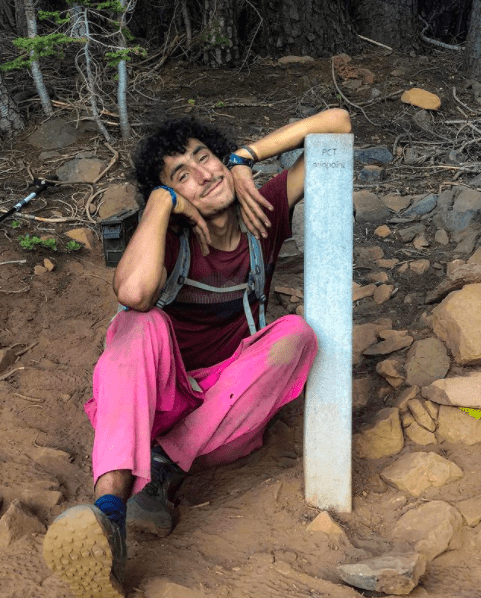
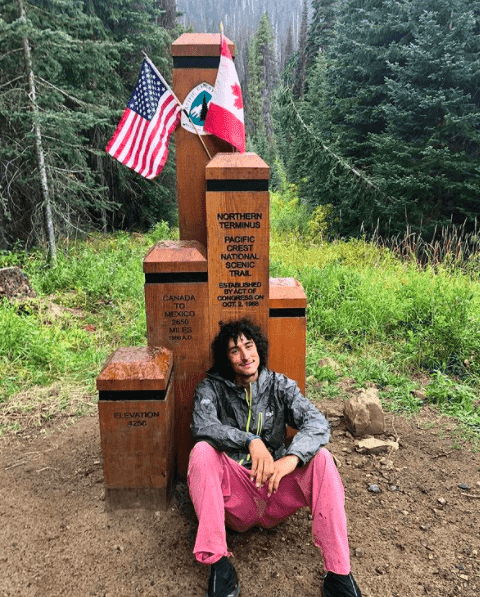
Hiking the long trails
In 2018 I hiked the Pacific Crest Trail, a hiking path that ranges 2,650 miles from Mexico to Canada and that travels through the states of California, Oregon, and Washington. Then, in 2020 I hiked the Appalachian Trail, starting in Georgia and leading through 2,200 miles to Maine.
In the same year, I also hiked southbound on the Continental Divide Trail, which ranges between 2,500 - 3,100 miles depending on your chosen route, all the way from Canada to Mexico. This epic trail goes through Montana, Idaho, Wyoming, Colorado, and New Mexico.
These three trails are known as the ‘Triple Crown’ of hiking – three truly majestic long distance trails across the USA that in total cover almost 8,000 miles of walking.

The Triple Crown
I was aiming for a “Calendar Year Triple Crown.” The Triple Crown is composed of these three hiking trails which is a feat in itself, but the Calendar Year attempt means doing them all in that simple, clear time period. So, after completing the PCT in 2018, I quickly adopted the much larger goal of doing the whole Triple Crown in one year.
Unfortunately the global pandemic had other ideas. My goal was to complete my adventure in 2020, but I decided to take a large break from the AT early that year to consider my options as Covid spread and became serious. Ultimately I had to cut the PCT out, which would mean that I would finish the AT and be ready to really focus on the Continental Divide.
Weighing up the options
The Appalachian Trail had never been high on my list of priorities. To be quite honest, after I had finished the PCT I only ever wanted to do the CDT. But I knew the limitations of this pridefulness. It would bother me profusely if I hiked the PCT and CDT, but was not a Triple Crowner. I had originally thought “Why not do the AT and CDT in the same year?” But if I was going to do two, why not just throw in a third one that I know I already love? So two morphed into three, but my original goal of two trails in a year re-emerged as an option when my stay-at-home pandemic break from the AT consumed the time I needed for the PCT.
I was determined to head back out - I would still have to hike quickly to complete both. But once the AT was done, I would get to hone in on the trail I really wanted to see: The Continental Divide.
The Joy of Long Trails

It is easy for someone like me to start a long distance hike dreaming of the magazine pictures I could be a part of. Without much effort of thought, I can romanticize the image of myself amidst the snowy peaks. It makes me simply laugh for no apparent reason beyond happiness. It is not every day where the magnitude of incredible mountain landscapes is overwhelming to the point of laughter, but it does happen.
I can only describe these circumstances as an expression of pure joy. This laughter and joy happened several times on my first thru-hike on the PCT. It also happened early in 2020, in pocketed clouds over the frigid snowy landscapes of the Roan Highlands on the AT.
Hiking for the sake of Growing
The trails were good, beautiful and hiking was wonderful. But long distance hiking isn’t always easy. Events from real life hit me even out in the woods, and they hit hard whilst I was on the AT. It was a struggle to share what I was going through with my fellow hikers. So much of it had to do with a break up.
I never expected that my first relationship crashing and burning would have so much of an impact on my mental fortitude. The struggles of others seemed much more viable than something as simple as heartbreak. I guess one of the lessons I learned on trail was that it is okay to be upset, whatever causes it.
For the better part of the year as I continued on trail I was mentally tanking, processing, hitting survival mode, and trying to heal. But through it all, I never stopped hiking. I struggled through and after not too long I finished the AT. I lost a lot of time because of a large push for hikers to vacate the trail during the pandemic.
When I had gotten back to the second half of the AT, I knew that I would only have time for two of the trails. Since I had already done the PCT, I decided I would still do my best to complete the triple crown.

A snapshot of life on the CDT
I was nearing the halfway point of the CDT by the time I hit the Wind River Range in Wyoming. I was just starting to catch my breath from the mental strain I had been experiencing and I found a place where I ought to have laughed again. My amazement, while present, was rather silent. While in utter awe, I did not feel compelled to laugh. I truly was having a great time out there, but I had so much confusion and anger I still needed to work out. It felt like my heart was operating at about 80% power.
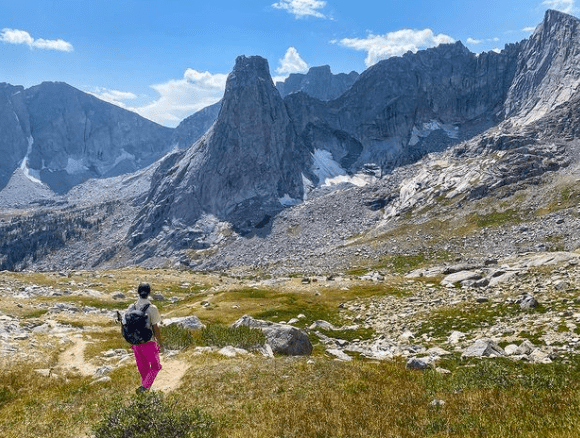
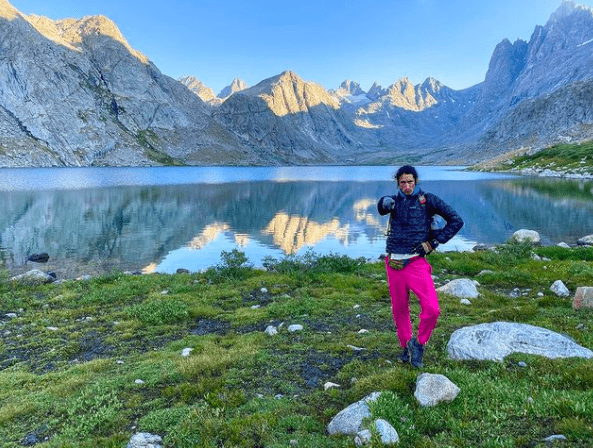
The Wind River Range is highly renowned, and I was very impressed by the unique rock formations. After one of the most beautiful days I have ever seen, I pitched my tarp, and the Wind Rivers lived up to their name – windy! Had I known how bad it was going to be, I would have camped just a little lower in the trees and calculated my angles of the tarp a little bit better, but the gusts knocked my poor little tarp over four or five times that night. I got so little sleep and was rather irritated.
The rollercoaster of hiking every day
When I started hiking again in the morning however, something in me had changed. Despite my grogginess and all I had been through, the unmarked trail ahead and some tough climbs, I realised that I loved what I was doing. I loved that it was hard and that I had miles to cover. I loved that everything I was going through was taking place in this amazing space: out here in nature, processing life. It was clear I just loved thru hiking. The Continental Divide Trail never made my life easier, but it gave me the space I needed to get stronger. It was like all the confusion and bitterness cleared for just enough time for me to see a glimpse of myself. I was growing as a human being and that is the whole reason I was out there in the first place.
Pace and frustrations

Physically, the CDT was easier than the AT from the start to finish, but as soon as I started headed southbound from the Canadian Border I was met with a confusing phenomenon. Something, though I could not wrap my head around what, was slowing me down.
Hiking speed is different for everyone, but 2 miles per hour versus 3 miles per hour makes a huge difference when walking long distances. Ultimately, a quick pace makes life on the trail easier. Faster means more miles in a day, more miles in a day means less time between supplies, less time between town means a lighter backpack, and a lighter backpack makes it easier to travel quickly.
So now I had to ask myself, why was I often able to hit 3 miles every hour on the AT with its absurd climbs and steep walks downhill, but hardly able to keep this speed on the steadier ground of the Continental Divide?
The CDT is the wildest and least waymarked trail
It seemed that the CDT had a new level of wild that slowed me down, often beyond reason. Sometimes the trail was overgrown, sometimes there was no trail and I had to look for the next signpost, often held up by just a pile of stones, and hope that the next one after that hadn’t been blown over by the wind - The CDT is a wild and remote trail with less folks living close by to maintain and oversee the routes.
The raw elements of exposed mountains and nature were epic but they came with a price. The way-finding and constant of pulling out electronic navigation to ensure I was on the right path, the overgrowth in the remotely used trails, the long water carries that came with living on the highpoint of the nation’s water shed.
All of these elements on the CDT made me feel like I was constantly being set back. Even small things like taking the time to dig the sunscreen out of my pack and tending to the constant sunburn on my nose. It all felt some how…slower. By the way, I also have to stop and point out that I am a man of much melanin and seldom burn, but the CDT made me swallow my pride and buy a hat to protect my face. This hike was indeed a trail different experience like no other.
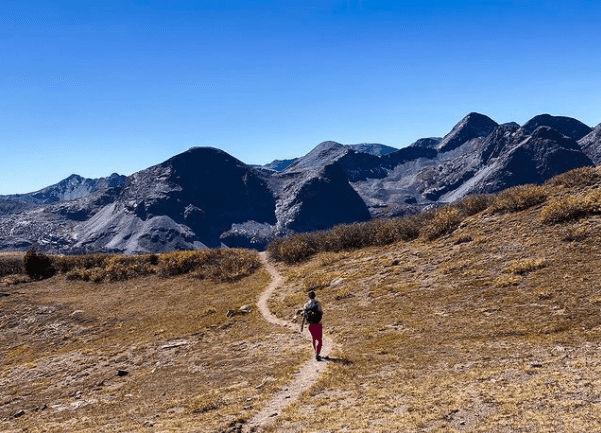
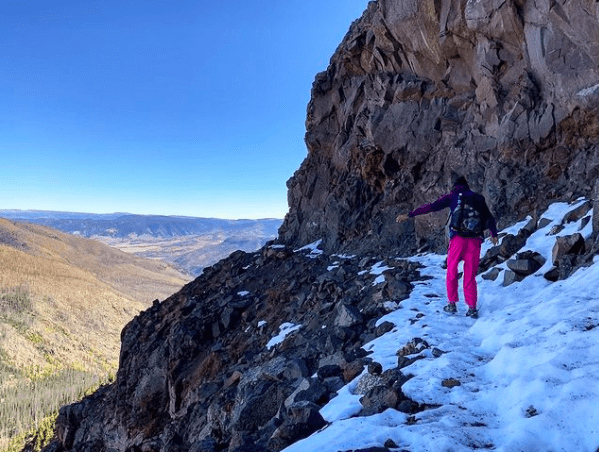
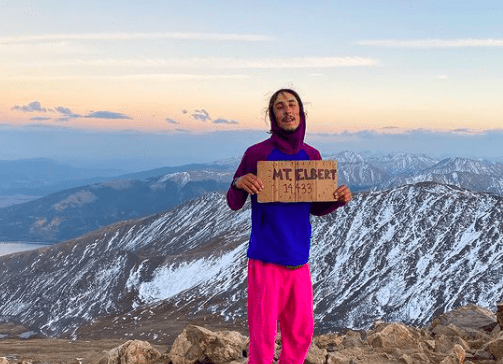
In comparison to the CDT, the PCT is open and full of mountain views. The AT is closed in a green tunnel of bushes and trees. However both PCT and AT follow a path that never changes.
The Cows
The CDT indeed follows a trail in the epic mountains, but ultimately for the rest of the way uses cows to connect the rest of the dots. So here’s where I get to the cows.
It’s a bit of an odd concept, but the Continental Divide is so dry that if there is not snow melt from mountains for you to drink, then you need find the spring that a rancher put a pipe into, in order to water their cows. That’s where you’ll find water – with the cows.
The Divide will bring you through cow pasture after cow pasture while you travel between the epic landscapes, and very often the path is a road for a rancher that eventually became a trail for the hiker.

On the Divide you must accept that the cows are your companions. I did see a grizzly bear in Idaho, but it ran away. There was a mountain lion in Colorado and it was the coolest thing, but it ran away too. I saw birds, goats, big-horn sheep and so many moose, but they all ran away. On the CDT it is the cows you live with and the cows that you will hear mooing at night. Though I suppose at some point, they too will run away.
The Trail provides
Long trail hiking will always give gifts no matter how hard it is. Toward the end of my hike I found myself in a section that is often spoken of highly; the Gila River. It was about to snow, so I decided to stick to the high route which only crosses the river once or twice. The river route, although stunning, crosses through the water hundreds of times.

Bad weather was coming but I lucked out the night before and found an epic cave to camp in, sheltering me from the snow. I had a dry start the next morning and then began trudging along in the eight inches of more snow that fell. Then, I made it to a fork in the road where I could either keep going along the high route, or sneak down to the river.
From up high where I was I had a small view of the canyons that the river carves through the snow. I knew that though my feet would be frigid and wet, I could not miss it. So down I went to cross the river, to soak my feet on sub-freezing day. The whole time I felt amazed. The whole time I was laughing beyond reason. I had never been so happy in my life. And this, my friends, is a long trail hiking on the CDT.
My Advice
My advice for anyone hiking the CDT is really the advice I would give for any thru-hike. Start your hike knowing that at some point it will be over. To dream of being out there is such a beautiful and exciting thing. But you must understand that it is part of life, and not life itself. This will be the difference between wallowing in your pain of loss, and thriving from the growth of your experience. Post Trail Depression is so real to so many, but you can frame your mind to minimize its effects.
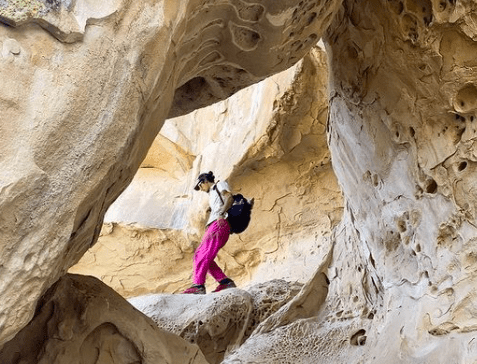
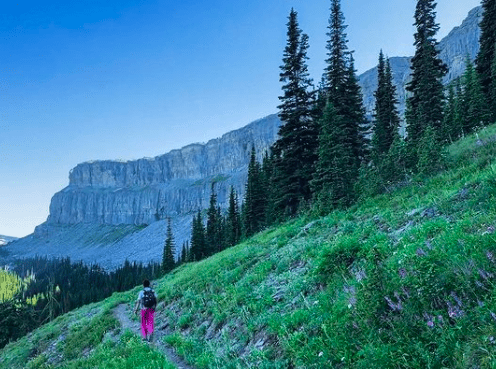
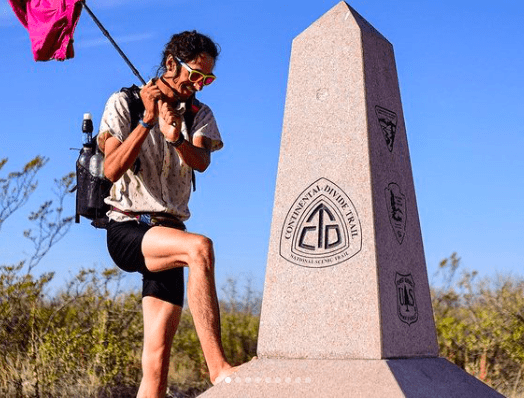
CDT Specifics
Make the rules up as you go! Generally on the AT or PCT, you don’t take shortcuts. The culture of the CDT encourages it. The trail is so vague at times that you can really go whichever way you want and it will work. The general rule of thumb is: stay within 50 miles on either side of the physical Continental Divide. This means you can take short cuts or go the longer way! I was rushed for time in Colorado and really wanted to see the San Juan range in the south. So, I took all the shorter alternatives, allowing me to take the longer stretch when I finally made it.
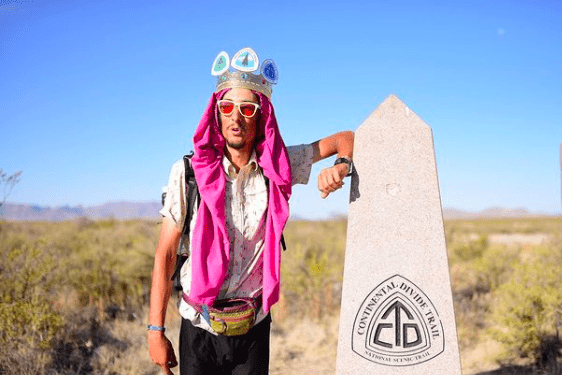
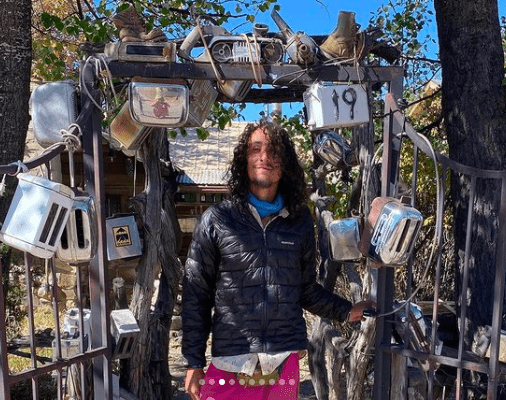
For the CDT I'd prepare to go slower than you expect. Be ready for a lot of dirt roads, and be meticulous about protecting your skin from the sun.
That being said, the challenge will be met with many blessings. You may find the wrong turn you took, though it cost twenty minutes, brings you a stellar view. You might find that the road walk ahead helps you quicken your pace to help you get to town. Especially before the restaurant you were hoping for closes! The exposure and sun can be tough. But those brown grasses that you trudge through will turn to gold as the sun finds its way toward the hills. (I highly recommend blasting the Chariots of Fire theme song during this time of day).
Lastly, try not to get too upset when a cow poops on the best tentsite. They are pretty unintelligent animals. They need all the help they can get.

